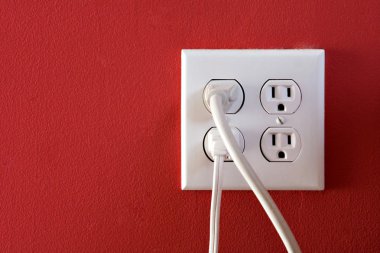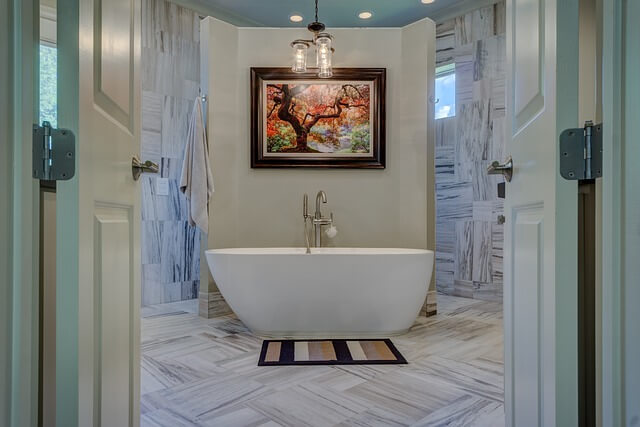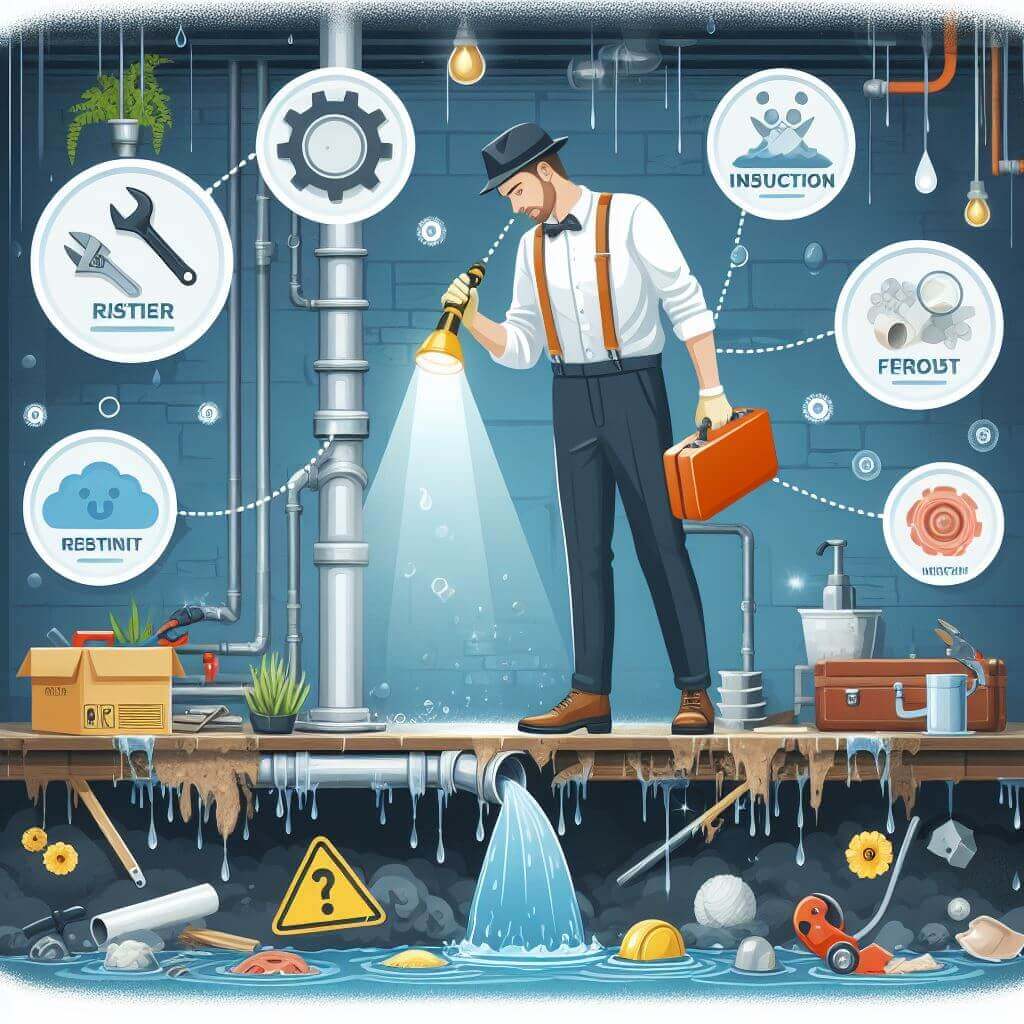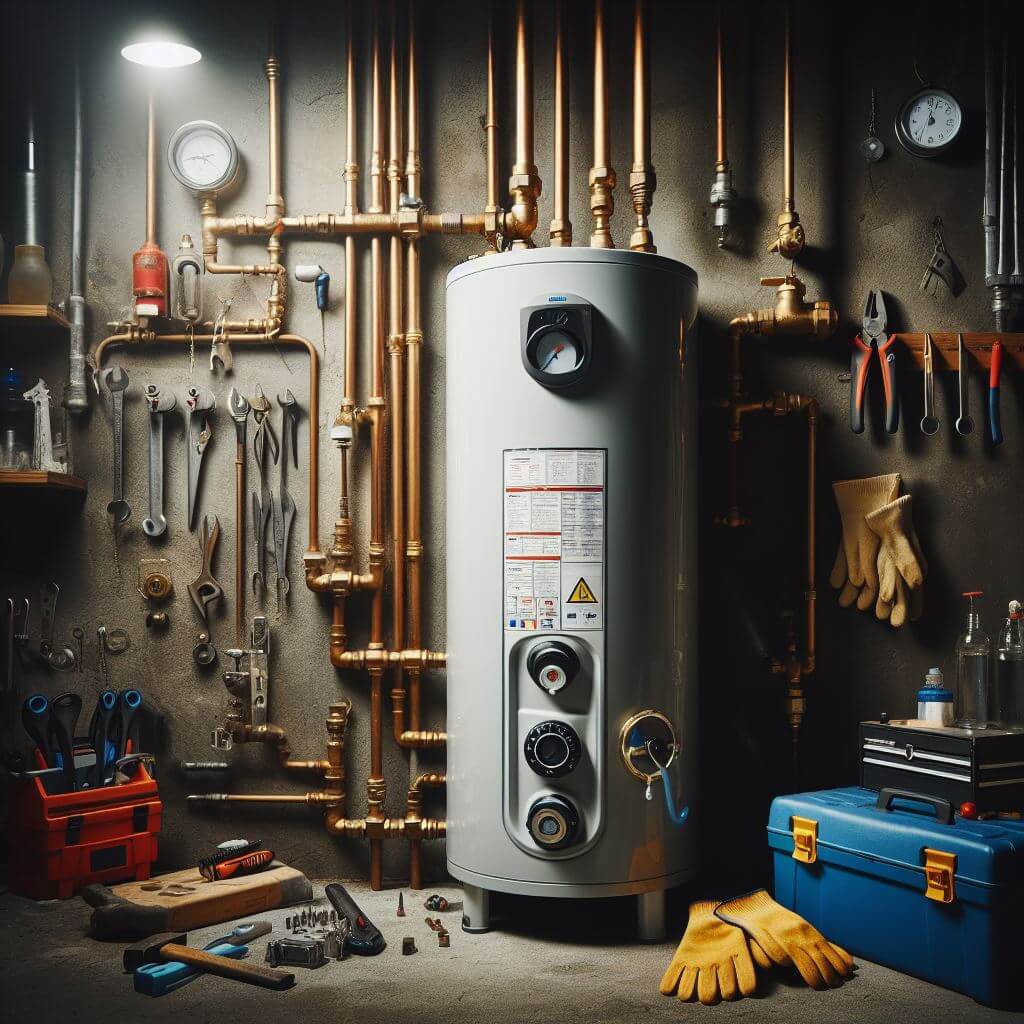DIY Fixes for Common Plumbing Issues: Tips and Tricks
Plumbing issues can be a major headache for homeowners, often requiring expensive repairs and professional help. However, many common plumbing problems can be fixed with simple DIY solutions. By learning how to identify and fix these issues, homeowners can save time and money, and avoid the inconvenience of a plumbing emergency.
One of the most common plumbing issues is a clogged drain. Whether it’s a sink, shower, or toilet, a clogged drain can cause water to back up and create a mess. Fortunately, there are several DIY solutions that can clear a clogged drain. From using a plunger to pouring a mixture of baking soda and vinegar down the drain, these fixes can be done quickly and easily.
Another common plumbing problem is a leaky faucet. Not only can a leaky faucet be annoying, but it can also waste a significant amount of water over time. Fortunately, fixing a leaky faucet is a simple DIY project that can be done with a few basic tools. By replacing a worn-out washer or O-ring, homeowners can stop the leak and save money on their water bill.
Understanding Common Plumbing Problems
Plumbing problems can be a major headache for homeowners. From leaky faucets to clogged drains, these issues can cause damage to your home and be costly to repair. However, with a little knowledge and some basic tools, many common plumbing problems can be fixed by DIY enthusiasts.
Leaky Faucet Repair
A leaky faucet is a common plumbing problem that can be caused by a variety of issues, such as worn out washers, damaged O-rings, or corroded valve seats. To fix a leaky faucet, start by turning off the water supply to the faucet. Then, disassemble the faucet and replace any damaged parts. It’s important to use the correct replacement parts for your faucet to ensure a proper repair.
Clogged Drain Solutions
Clogged drains can be caused by a variety of factors, such as hair, soap scum, or food particles. To fix a clogged drain, start by using a plunger to try and remove the blockage. If that doesn’t work, try using a drain snake to break up the clog. You can also try using a mixture of baking soda and vinegar to dissolve the clog. If none of these methods work, it may be time to call in a professional plumber.
Toilet Unclogging Techniques
A clogged toilet can be a messy and unpleasant problem, but it can usually be fixed without the help of a plumber. Start by using a plunger to try and remove the blockage. If that doesn’t work, try using a toilet auger to break up the clog. You can also try using a mixture of baking soda and vinegar to dissolve the clog. If these methods don’t work, it may be time to call in a professional plumber.
By understanding these common plumbing problems and having some basic plumbing repair tips, homeowners can save money and avoid costly repairs. However, it’s important to know when to call in a professional plumber if DIY fixes aren’t successful.
Basic Plumbing Repairs at Home
When it comes to basic plumbing repairs, there are a few DIY fixes that can be done at home. Here are some simple solutions to common plumbing issues that can save you time and money.
Pipe Fixing Methods
Leaking pipes can cause water damage and increase your water bill. The first step is to turn off the water supply and drain the affected pipe. Next, identify the source of the leak and determine the type of pipe you are working with. For small leaks, a pipe clamp or epoxy putty can be used to temporarily fix the issue. For larger leaks, a section of the damaged pipe may need to be replaced.
Showerhead Dripping Solutions
A dripping showerhead can be a nuisance and waste water. The first step is to turn off the water supply to the shower. Next, remove the showerhead and check for any debris or buildup that may be causing the issue. Clean the showerhead and reattach it, making sure it is tightened securely. If the issue persists, a worn-out washer or valve may need to be replaced.
Sink Unblock Tips
Clogged sinks can be frustrating and cause water to back up. The first step is to try using a plunger to remove the blockage. If that doesn’t work, try using a plumbing snake to break up the obstruction. For stubborn clogs, a mixture of baking soda and vinegar can be poured down the drain, followed by hot water. This can help break down the blockage and clear the drain.
By following these basic plumbing repairs, homeowners can save time and money on easy plumbing fixes. However, if the issue persists or seems too complex, it’s always best to call a professional plumber.
DIY Solutions for Water Flow Issues
Water Pressure Issues
Low water pressure in sinks can be caused by a variety of factors, including a clogged aerator, a malfunctioning pressure regulator, or mineral buildup in the pipes. One easy fix for a clogged aerator is to unscrew it from the end of the faucet and soak it in vinegar overnight. If the pressure regulator is malfunctioning, it may need to be replaced by a professional plumber.
If the water pressure is low throughout the entire house, there may be a water line clog. To diagnose this issue, turn on multiple faucets throughout the house and see if the water pressure is consistently low. If it is, it may be necessary to call a plumber to clear the clog.
Water Heater Maintenance
Water heaters can also cause water flow issues if they are not properly maintained. Sediment buildup in the tank can cause the water flow to slow down, and the heater may need to be flushed to remove the sediment. This can be done by turning off the power or gas to the heater, attaching a hose to the drain valve, and flushing out the sediment.
In addition, the water heater’s pressure relief valve should be checked regularly to ensure proper functioning. If the valve is malfunctioning, it may need to be replaced by a professional plumber.
By following these DIY solutions for water flow issues, homeowners can improve their water pressure and ensure their water heater is functioning properly.
Sewer System Maintenance and Fixes
Home Remedies for Blocked Sewer Lines
Blocked sewer lines can be a major inconvenience for homeowners. However, there are some home remedies that can help clear up the blockage before calling a professional plumber.
One effective method is to use a mixture of baking soda and vinegar. Pour a cup of baking soda down the drain, followed by a cup of vinegar. Cover the drain with a plug and let the mixture sit for at least an hour. Afterward, flush the drain with hot water to clear out any remaining debris.
Another solution is to use a plunger. Place the plunger over the drain and pump it up and down vigorously. This can help dislodge any blockages and allow water to flow freely again.
DIY Sewer Repair
While some sewer issues may require professional assistance, there are certain repairs that can be done by homeowners themselves.
One common issue is a cracked or broken sewer line. If the damage is minor, it may be possible to fix it with a pipe repair clamp. These are available at most hardware stores and can be easily installed with a screwdriver.
Another DIY solution is to replace a damaged sewer line with a PVC pipe. This can be done by cutting out the damaged section and attaching the new pipe with couplings and PVC cement. However, it is important to ensure that the new pipe is properly installed and sealed to prevent any future leaks.
Regular maintenance of the sewer system is also important to prevent future issues. This includes avoiding flushing non-degradable items down the toilet, such as wipes and feminine hygiene products, and scheduling regular inspections with a professional plumber.
By following these home remedies and DIY solutions, homeowners can save money and avoid the inconvenience of a blocked or damaged sewer line.
Plumbing Tools and Their Uses
Having the right plumbing tools can make all the difference when it comes to tackling common plumbing issues around the home. Here are some essential plumbing tools and their uses:
1. Plunger: Your First Line of Defense in Clog Removal
A plunger isn’t just a tool; it’s a homeowner’s first line of defense in the battle against clogs. Primarily, it serves the purpose of clearing blockages in toilets, sinks, and other drains. The effectiveness of a plunger lies in its simple design: the rubber cup creates a vacuum seal, which, when moved up and down vigorously, generates enough suction to dislodge most blockages.
To maximize its effectiveness, ensure you’re using the right type of plunger. For instance, a flange plunger, with its extended rubber lip, is specifically designed for toilets and helps in creating a better seal. Conversely, a cup plunger, with its flat rim, is ideal for sinks and tubs. When using a plunger, make sure the cup is fully submerged in water. This creates the necessary suction and pressure. A few forceful plunges usually do the trick in loosening up the clog, making it one of the most Basic Plumbing Repairs tools in your arsenal.
Moreover, for homeowners seeking Easy Plumbing Fixes, knowing how to use a plunger effectively can save the day. It’s a prime example of a DIY Plumbing Fix – simple, cost-effective, and usually quite successful. Regular maintenance and proper usage of a plunger can help mitigate Common Plumbing Problems like minor clogs before they escalate. This aligns well with the principles of Preventive Plumbing Care, emphasizing the importance of regular checks and basic maintenance tasks in Home Plumbing Solutions.
2. Pipe Wrench: A Versatile Tool in Plumbing Repairs
A pipe wrench, known for its durability and versatility, is an indispensable tool in Plumbing Repair Tips and solutions. Its primary use is to tighten or loosen pipes and fittings, making it crucial for both installation and repair tasks. This tool stands out for its adjustable jaws, which can be tailored to grip pipes of various sizes securely.
However, it’s essential to use a pipe wrench with caution. One common mistake is over-tightening, which can lead to damaged pipes or fittings. To avoid this, apply steady pressure and stop once you feel resistance. Additionally, wrapping the jaws of the wrench with a cloth can prevent scratches on visible plumbing fixtures, maintaining the aesthetic integrity of your home. This practice is especially relevant in DIY Plumbing Fixes, where maintaining the condition of your plumbing fixtures is as important as the repair itself.
Furthermore, for those involved in Home Plumbing Solutions, understanding the types of pipe wrenches can enhance your DIY efforts. For example, a straight pipe wrench is ideal for regular pipes, while an end pipe wrench is designed for close-to-wall work. Knowing these differences can make Basic Plumbing Repairs more efficient and effective.
In essence, a pipe wrench is more than a tool; it’s a partner in your Plumbing DIY Guide journey. Its correct usage not only solves immediate Common Plumbing Problems but also contributes to the longevity and functionality of your home’s plumbing system. Remember, the key to successful Household Plumbing Troubleshooting lies in knowing how to use your tools effectively and responsibly.
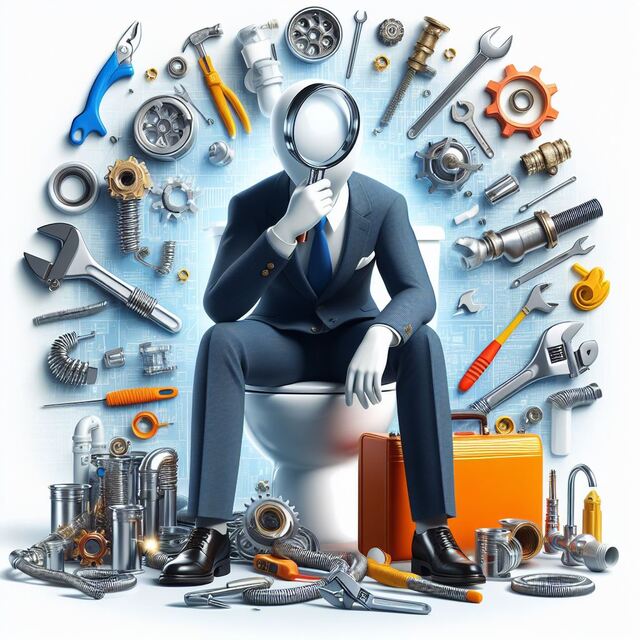
3. Teflon Tape: Enhancing Leak Prevention in Plumbing
Teflon tape, often referred to as plumber’s tape, plays a pivotal role in DIY Plumbing Fixes. This specialized tape is designed to seal pipe threads effectively, thereby preventing leaks that are common in household plumbing. It’s a staple in any Plumbing DIY Guide, valued for its ease of application and effectiveness.
When applying Teflon tape, it’s crucial to wrap it around the pipe threads in the correct direction; typically, this means wrapping it clockwise. This ensures that when you screw the fitting onto the pipe, the tape tightens rather than unravels. This technique is a key aspect of Pipe Fixing Methods and is essential in Home Plumbing Solutions. Teflon tape is not only effective but also highly accessible, available at most hardware stores and a must-have in your Basic Plumbing Repairs toolkit.
Incorporating Teflon tape into your plumbing projects contributes significantly to Preventive Plumbing Care. By creating a watertight seal, it helps avoid potential leaks and water damage, which are common concerns in Household Plumbing Troubleshooting. For those tackling Common Plumbing Problems, mastering the use of Teflon tape is a simple yet crucial skill.
Ultimately, Teflon tape exemplifies an easy yet efficient solution within the realm of Plumbing Repair Tips. Its simplicity and effectiveness make it a go-to resource, not just for professionals but also for homeowners engaged in Easy Plumbing Fixes. Understanding and utilizing Teflon tape can elevate your plumbing maintenance skills, saving time and preventing future issues.
4. Auger: Your Essential Tool for Tackling Stubborn Clogs
An auger, often called a plumber’s snake, is an indispensable tool for addressing more challenging Common Plumbing Problems such as deep clogs in drains and pipes. This tool features a long, flexible cable designed to navigate the twists and turns of plumbing systems, reaching clogs that are otherwise inaccessible. Its functionality is crucial in DIY Plumbing Fixes where professional equipment might not be readily available.
When using an auger, it’s important to slowly feed the cable into the drain to avoid damaging the pipes. Once the auger reaches the blockage, a bit of twisting and turning helps to break up or retrieve the clog. This tool is especially useful for Clogged Drain Solutions, making it a must-have in any Plumbing DIY Guide. Augers come in various sizes, catering to different types of drains and clogs, and are readily available at most hardware stores, making them accessible for all your Home Plumbing Solutions.
Using an auger can be a cost-effective alternative to calling a professional plumber. It exemplifies a key Easy Plumbing Fix that homeowners can undertake, saving both time and money. By incorporating the use of an auger into your Basic Plumbing Repairs toolkit, you enhance your ability to manage Household Plumbing Troubleshooting more effectively.
In essence, an auger is more than just a tool; it’s a critical asset in your plumbing repair arsenal. Whether you’re dealing with a simple sink blockage or a more complicated sewer line issue, having an auger on hand can be the difference between a quick fix and a prolonged plumbing problem. It’s a prime example of a practical, hands-on approach to maintaining and repairing your home’s plumbing system.
5. Safety Gear: Essential for Effective and Secure Plumbing Work
When embarking on any plumbing project, prioritizing safety is as crucial as having the right tools. Wearing appropriate safety gear is not just a recommendation; it’s a necessity for DIY Plumbing Fixes. This includes sturdy gloves, robust eye protection, and a reliable mask. Gloves are your first line of defense, protecting your hands from potential cuts, scrapes, and burns that can occur while handling pipes and tools. Eye protection is equally important, as it shields your eyes from harmful debris, a common occurrence when dealing with Common Plumbing Problems.
Additionally, a mask plays a vital role in safeguarding your respiratory health. Plumbing work can expose you to various harmful fumes and dust particles, especially when dealing with older pipes or Clogged Drain Solutions. A mask helps filter these out, ensuring you’re not inhaling anything potentially dangerous. This aspect of safety is often overlooked in Basic Plumbing Repairs, but it is critical for maintaining good health.
Moreover, incorporating safety gear into your Plumbing DIY Guide routine enhances your confidence and efficiency. Knowing that you are protected allows you to focus more on the task at hand, whether it’s Leaky Faucet Repair or Toilet Unclogging Techniques. It’s a fundamental aspect of DIY Plumbing Safety Tips that every homeowner should adopt.
In summary, donning the right safety gear is a key element in Home Plumbing Solutions. It ensures that you can tackle Household Plumbing Troubleshooting and Easy Plumbing Fixes safely and effectively. Remember, a well-prepared DIY plumber is not just equipped with tools but also with the necessary protective gear for a safe and successful project.
Preventive Plumbing Care
Preventative Measures for Home Plumbing Systems
Preventive plumbing care is essential to ensure that the plumbing system in your home remains in good condition. There are several measures that homeowners can take to prevent plumbing issues from occurring. Regular maintenance and inspections can help identify potential problems before they turn into major issues.
One way to prevent plumbing problems is to avoid flushing non-flushable items down the toilet. This includes items such as sanitary products, baby wipes, and paper towels. These items can cause blockages in the plumbing system and lead to costly repairs.
Another preventive measure is to avoid pouring grease or oil down the drain. Grease can solidify and cause blockages in the plumbing system. Instead, homeowners should dispose of grease and oil in a container and throw it in the trash.
Home Plumbing Inspection
Homeowners should conduct regular inspections of their plumbing system to identify potential issues. Inspections should include checking for leaks, corrosion, and damage to pipes and fixtures.
Homeowners should also check for signs of water damage, such as water stains on ceilings or walls. If there are signs of water damage, it may be an indication of a leak in the plumbing system.
In addition, homeowners should inspect the water heater for signs of corrosion or leaks. The water heater should be drained and flushed annually to remove sediment buildup.
By taking preventive measures and conducting regular inspections, homeowners can avoid costly plumbing repairs and ensure that their plumbing system remains in good condition.
Step-by-Step DIY Plumbing Guides
If you’re looking to save some money and tackle your plumbing issues yourself, here are some step-by-step DIY guides to help you get started.
How to Fix a Leaky Kitchen Faucet at Home
A leaky kitchen faucet can be a frustrating problem to deal with, but it’s a common issue that can be fixed with a few simple steps. Here’s how to fix a leaky kitchen faucet at home:
- Turn off the water supply to the faucet.
- Remove the handle and the cap from the faucet.
- Use pliers to remove the cartridge from the faucet.
- Replace the old cartridge with a new one.
- Reassemble the faucet and turn on the water supply.
Step-by-Step Guide to Unclogging a Shower Drain
A clogged shower drain can cause water to back up and create a mess in your bathroom. Here’s how to unclog a shower drain with a few simple steps:
- Remove the drain cover.
- Use a plunger to try and dislodge the clog.
- If the plunger doesn’t work, use a drain snake to break up the clog.
- Flush the drain with hot water to remove any remaining debris.
Repairing a Running Toilet Without Professional Help
A running toilet can waste a lot of water and increase your water bill. Here’s how to repair a running toilet without professional help:
- Turn off the water supply to the toilet.
- Remove the lid from the toilet tank.
- Check the flapper valve to see if it’s worn or damaged.
- Replace the flapper valve if necessary.
- Check the fill valve to see if it’s working properly.
- Replace the fill valve if necessary.
- Turn on the water supply and test the toilet.
By following these step-by-step DIY plumbing guides, you can save money and fix common plumbing issues on your own. Remember to always turn off the water supply before attempting any repairs, and if you’re unsure about anything, don’t hesitate to call a professional plumber.
Troubleshooting Specific Plumbing Issues
Troubleshooting Common Household Plumbing Problems
When it comes to household plumbing issues, there are a few common problems that homeowners may encounter. These problems can range from leaky faucets to clogged drains. If you are experiencing any of these problems, there are a few things you can do to troubleshoot the issue before calling a plumber.
One common issue is a leaky faucet. This can be caused by a worn-out washer or O-ring. To fix this, turn off the water supply to the faucet and remove the handle. Then, use pliers to remove the washer or O-ring and replace it with a new one.
Another common issue is a clogged drain. This can be caused by a buildup of hair, soap scum, or other debris. To fix this, try using a plunger to dislodge the blockage. If this doesn’t work, you can try using a drain snake to remove the clog.
Burst Pipe Emergency Fixes
A burst pipe can be a homeowner’s worst nightmare. If you experience a burst pipe, it is important to act quickly to prevent further damage to your home. The first step is to turn off the main water supply to your home. Then, open all of the faucets in your home to drain any remaining water.
Next, locate the burst pipe and use a pipe cutter to remove the damaged section of pipe. Then, use a coupling to connect a new section of pipe to the existing plumbing. Finally, use plumber’s tape and a wrench to secure the coupling in place.
Water Heater Malfunctioning
A malfunctioning water heater can be a major inconvenience. If your water heater is not working properly, there are a few things you can do to troubleshoot the issue. First, check to see if the pilot light is lit. If it is not, try relighting it according to the manufacturer’s instructions.
If the pilot light is lit but you are still not getting hot water, check the thermostat on the water heater. It may need to be adjusted to a higher temperature. If neither of these solutions work, it may be time to call a plumber to diagnose and fix the problem.
By following these DIY fixes for common plumbing issues, homeowners can save time and money by avoiding the need for a professional plumber. However, if you are not comfortable performing these repairs yourself, it is always best to call a licensed plumber to ensure the job is done correctly and safely.
Easy Fixes for Daily Plumbing Annoyances
Plumbing issues can be a major annoyance for homeowners, but not all plumbing problems require a professional plumber. In fact, many common plumbing issues can be fixed with a few simple tools and techniques. Here are some easy fixes for daily plumbing annoyances that anyone can try.
Easy Ways to Unclog a Kitchen Sink
A clogged kitchen sink can be a frustrating problem, but there are several easy ways to unclog it. One of the easiest ways is to use a plunger. Simply fill the sink with water, place the plunger over the drain, and pump it up and down until the clog is cleared.
Another effective method is to use a mixture of baking soda and vinegar. First, pour a cup of baking soda down the drain, followed by a cup of vinegar. Let the mixture sit for about 15 minutes, then pour boiling water down the drain to clear it.
If these methods don’t work, you can try using a plumbing snake. Insert the snake into the drain until you feel resistance, then turn the handle to break up the clog.
Cost-Effective Plumbing Repair Techniques
When it comes to plumbing repairs, hiring a professional plumber can be expensive. Fortunately, there are several cost-effective repair techniques that homeowners can try.
For dripping taps, the most common cause is a worn-out washer. To fix this, turn off the water supply to the tap, remove the handle, and replace the washer. This is a simple fix that can save you money on your water bill.
Blocked pipes can be a more serious issue, but there are several cost-effective solutions. One option is to use a drain cleaning product, which can dissolve the clog and clear the pipes. Another option is to use a plumbing snake to break up the clog.
By trying these easy fixes for daily plumbing annoyances, homeowners can save money on repairs and avoid the hassle of hiring a professional plumber.
When to Call a Professional
While DIY plumbing fixes can save you money and time, there are some situations where it’s best to call in a professional plumber. Here are some common plumbing issues that require the expertise of a licensed plumber:
- Burst or leaking pipes: If a pipe has burst or is leaking, it’s important to turn off the water supply immediately and call a professional plumber. Burst pipes can cause extensive water damage to your home and can be hazardous if not fixed properly.
- Sewer line problems: Sewer line issues can cause sewage backups and foul odors in your home. These problems require specialized equipment and expertise to fix, so it’s best to leave them to the professionals.
- Gas line problems: Gas line issues can be dangerous and require specialized knowledge to fix. If you suspect a gas leak or notice the smell of gas in your home, evacuate immediately and call a professional plumber.
- Water heater problems: Water heaters can be dangerous if not handled properly. If you notice any issues with your water heater, such as leaks or strange noises, it’s best to call in a professional plumber.
- Low water pressure: Low water pressure can be caused by a variety of issues, including clogged pipes or a malfunctioning water pump. A professional plumber can diagnose the issue and provide a safe and effective solution.
Remember, safety should always be your top priority when it comes to DIY plumbing fixes. If you’re unsure about a particular issue or don’t have the necessary skills and equipment to fix it, it’s best to call in a professional plumber.
Frequently Asked Questions
How can I repair a dripping faucet on my own?
Repairing a dripping faucet is a common plumbing issue that can be fixed without professional help. First, turn off the water supply to the faucet. Then, remove the handle and unscrew the packing nut. Replace the washer and reassemble the faucet. Turn the water supply back on and test the faucet for leaks.
What are the steps to unclog a blocked drain without professional help?
Unclogging a blocked drain can be done without professional help. Start by using a plunger to create suction and dislodge the blockage. If that doesn’t work, try using a drain snake to remove the blockage. You can also use a mixture of baking soda and vinegar to break up the blockage. Pour the mixture down the drain and let it sit for a few minutes before flushing with hot water.
What should I include in a basic home plumbing repair kit?
A basic home plumbing repair kit should include a plunger, adjustable wrench, pipe wrench, Teflon tape, plumber’s putty, and a drain snake. These tools can help you tackle common plumbing issues.
How can beginners learn to tackle simple plumbing repairs?
Beginners can learn to tackle simple plumbing repairs by researching online or watching tutorial videos. It’s important to start with small repairs and work your way up to more complex ones. Practice safety precautions and don’t hesitate to call a professional if you’re unsure about a repair.
What are some common mistakes to avoid when doing DIY plumbing?
Common mistakes to avoid when doing DIY plumbing include using the wrong tools, not turning off the water supply, and not properly securing connections. It’s also important to avoid using harsh chemicals that can damage pipes.
How do you properly diagnose a plumbing issue before attempting a fix?
To properly diagnose a plumbing issue, start by identifying the symptoms. Is there a leak? Is the water pressure low? Then, investigate the cause of the issue. Look for visible damage, such as cracks or corrosion. If you’re unsure, it’s best to consult with a professional plumber.

